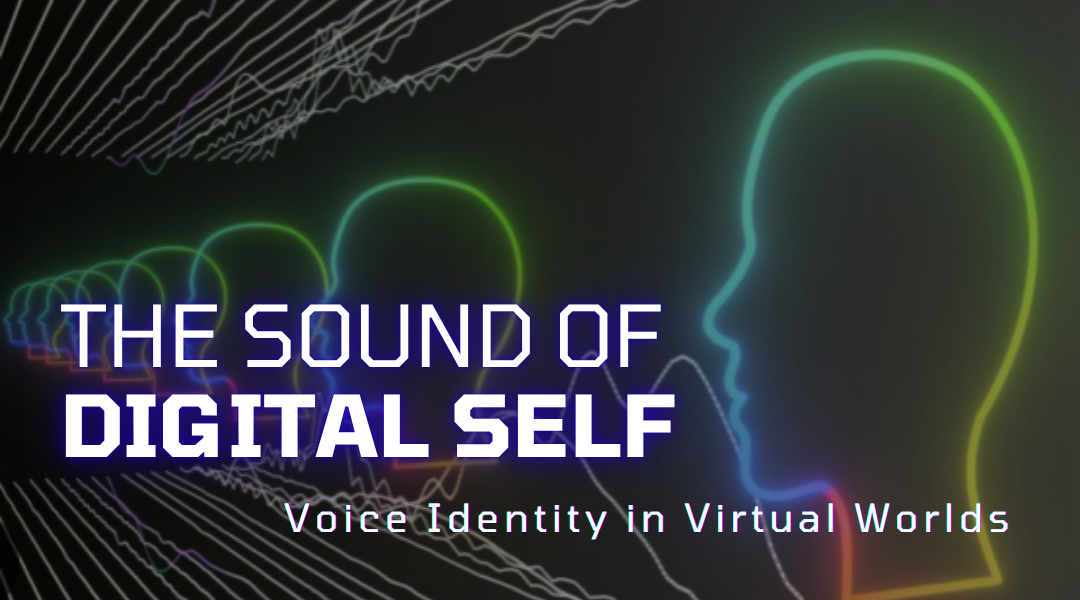As we step into increasingly immersive digital environments, we’re discovering that true presence requires more than just visual representation. In spaces where physical form becomes optional, the human voice emerges as the anchor of identity—the most intimate and recognizable element of our personal expression. Voice cloning technology is now bridging the gap between our physical and digital selves, creating a continuity of identity that transforms how we connect, create, and communicate in virtual spaces.
This isn’t merely about technical replication; it’s about extending the most human part of ourselves into realms where our voices can work, play, and create alongside us. The virtual world is learning to speak with our voices, and in doing so, it’s becoming more authentically ours.
Your Avatar’s True Voice: Beyond Visual Representation
In virtual environments, avatars have traditionally suffered from a fundamental disconnect: they look unique but sound generic. Voice cloning shatters this limitation, allowing your digital representation to speak with the same vocal identity you possess in the physical world.
The New Avatar Voice Dynamics:
- Identity Consistency: Professional avatars in virtual workplaces can now maintain the same vocal presence as their real-world counterparts, building recognition and trust through consistent vocal identity across meetings and presentations.
- Creative Expression: Gamers and content creators can develop “vocal skins”—modified versions of their core voice that suit different characters or scenarios while maintaining their essential vocal identity.
- Accessibility Innovation: Individuals with speech challenges can create personalized avatar voices that reflect their preferred vocal identity rather than settling for generic text-to-speech options.
Real-World Implementation:
Dr. Evans, who teaches architecture through a virtual reality platform, created a voice clone that maintains his distinctive teaching style—his thoughtful pauses, his way of emphasizing key concepts, even his slight Midwestern accent. His students report that hearing “his” voice from their virtual guide makes the learning experience feel significantly more personal and engaging, as if he’s personally mentoring them through each digital structure.
The Architecture of Immersion: Sound as Environmental Fabric
Virtual reality achieves its power through sensory engagement, and voice cloning is revolutionizing how we experience audio presence in digital spaces. The technology allows for creating vocal environments that feel both personalized and contextually appropriate.
Transformative Audio Applications:
- Guided Experiences: From virtual museum tours to therapeutic environments, cloned voices provide consistent, familiar narration that enhances comfort and engagement.
- Dynamic Response Systems: Interactive virtual spaces can now respond to users with personalized vocal feedback that adapts to context and user behavior.
- Emotional Atmosphere Creation: The ability to fine-tune vocal qualities allows creators to design specific emotional tones for different virtual environments.
Case Study in Immersion:
A virtual reality meditation platform developed “Sonic Sanctuaries” using voice cloning technology. The founder’s voice, cloned and calibrated for therapeutic tones, guides users through different environments. In the “Mountain Retreat” setting, her voice carries calm authority; in the “Forest Sanctuary,” it adopts a softer, more conversational tone. Users consistently report that the familiar, trusted voice significantly deepens their meditative state, creating a sense of safety and personal connection.
The Living World: Intelligent Characters with Authentic Voices
The most profound impact of voice cloning in virtual environments may be in populating these spaces with characters that speak with authentic, recognizable voices. This moves beyond pre-recorded dialogue to create dynamic, responsive interactions.
Next-Generation Character Interaction:
- Personalized Guides: Educational and training simulations can feature mentor characters that speak with the voice of actual experts or instructors.
- Brand Embodiment: Companies can create virtual representatives that maintain consistent brand voice across thousands of simultaneous interactions.
- Storytelling Evolution: Writers and game developers can craft narratives where characters speak with specific vocal identities that remain consistent across endless possible interactions.
Implementation Example:
In an educational virtual world exploring ancient civilizations, students encounter historical figures voiced by renowned historians. The platform uses cloned voices of these experts, allowing students to “converse” with digital representations that speak with the historians’ actual voices, mannerisms, and teaching styles. This creates an unprecedented level of authenticity, making historical learning feel like personal dialogue with experts.
The Ethical Dimension: Voice as Digital Property
As voices become integral to virtual identity, new considerations emerge around voice ownership, consent, and authentication in digital spaces.
Emerging Standards and Practices:
- Voice Authentication Systems: Development of verification methods to ensure cloned voices are used with proper authorization in virtual environments.
- Usage Licensing Frameworks: Clear structures for how cloned voices can be deployed across different virtual platforms and applications.
- Consent Management: Systems that ensure voice donors maintain control over how their vocal identity is used in virtual spaces.
Conclusion: The Unbroken Thread of Identity
Voice cloning in virtual environments represents something far more significant than a technical achievement—it’s the preservation of self across digital frontiers. In a world where we’re increasingly present in virtual spaces, our voice becomes the continuous thread that connects our physical and digital identities.
The most successful implementations of this technology will be those that recognize the voice not as a separate feature, but as an integral component of digital presence. As virtual worlds become more sophisticated, the ability to maintain our unique vocal identity across platforms and experiences will become as fundamental as having a consistent visual appearance.
We’re moving toward a future where our digital interactions can carry the same vocal authenticity as our face-to-face conversations. In this new landscape, the distance between physical and digital presence narrows, not through technological trickery, but through the preservation of what makes our communication uniquely human. The virtual world is learning to speak in our voices, and in doing so, it’s becoming not just a place we visit, but a space where we truly belong.
